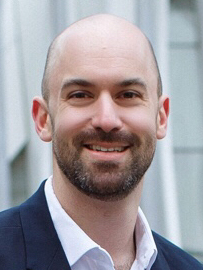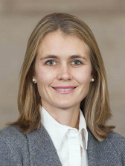Accuracy and efficiency of patient setup using surface imaging versus skin tattoos for accelerated partial breast irradiation Journal Article
| Authors: | Mueller, B.; Song, Y.; Chia-Ko, W.; Hsu, H. Y.; Zhai, X.; Tamas, P.; Powell, S.; Cahlon, O.; McCormick, B.; Khan, A.; Gillespie, E.; Cervino, L.; Zhao, B.; Hong, L.; Braunstein, L. Z. |
| Article Title: | Accuracy and efficiency of patient setup using surface imaging versus skin tattoos for accelerated partial breast irradiation |
| Abstract: | Purpose: Skin tattoos represent the standard approach for surface alignment and setup of breast cancer radiation therapy, yet permanent skin markings contribute to adverse cosmesis and patient dissatisfaction. With the advent of contemporary surface-imaging technology, we evaluated setup accuracy and timing between “tattoo-less” and traditional tattoo-based setup techniques. Methods and Materials: Patients receiving accelerated partial breast irradiation (APBI) underwent traditional tattoo-based setup (TTB), alternating daily with a tattoo-less setup via surface imaging using AlignRT (ART). Following initial setup, position was verified via daily kV imaging, with matching on surgical clips representing ground truth. Translational shifts (TS) and rotational shifts (RS) were ascertained, as were setup time and total in-room time. Statistical analyses used the Wilcoxon signed rank test and Pitman-Morgan variance test. Results: A total of 43 patients receiving APBI and 356 treatment fractions were analyzed (174 TTB fractions and 182 using ART). For tattoo-less setup via ART, the median absolute TS were 0.31 cm in the vertical (range, 0.08-0.82), 0.23 cm in the lateral (0.05-0.86), and 0.26 cm in the longitudinal (0.02-0.72) axes. For TTB setup, the corresponding median TS were 0.34 cm (0.05-1.98), 0.31 cm (0.09-1.84), and 0.34 cm (0.08-1.25), respectively. The median magnitude shifts were 0.59 (0.30-1.31) for ART and 0.80 (0.27-2.13) for TTB. ART was not statistically distinguishable from TTB in terms of TS, except in the longitudinal direction (P =.154,.059, and.021, respectively), and was superior to TTB for magnitude shift (P <.001). The variance of each TS variable was significantly narrower for ART compared with TTB (P ≤.001 vertical, P =.001 lateral, P =.005 longitudinal). The median absolute RS for ART was 0.64° rotation (range, 0.00-1.90), 0.65° roll (0.05-2.90), and 0.30° pitch (0.00-1.50). The corresponding median RS for TTB were 0.80° (0.00-2.50), 0.64° (0.00-3.00), and 0.46° (0.00-2.90), respectively. ART setup was not statistically different from TTB in terms of RS (P =.868,.236, and.079, respectively). ART showed lower variance than TTB in terms of pitch (P =.009). The median total in-room time was shorter for ART than TTB (15.42 vs 17.25 minutes; P =.008), as was the median setup time (11.12 vs 13.00 minutes; P =.001). Moreover, ART had a narrower distribution of setup time with fewer lengthy outliers versus TTB. Conclusions: These findings suggest that a tattoo-less setup approach with AlignRT may be sufficiently accurate and expeditious to supplant surface tattoos for patients receiving APBI. Further analyses with larger cohorts will determine whether tattoo-based approaches can be replaced by noninvasive surface imaging. © 2023 The Author(s) |
| Keywords: | clinical article; controlled study; treatment planning; breast cancer; skin surface; intermethod comparison; image registration; accelerated partial breast irradiation; tattooing; planning target volume; human; article |
| Journal Title: | Advances in Radiation Oncology |
| Volume: | 8 |
| Issue: | 3 |
| ISSN: | 2452-1094 |
| Publisher: | Elsevier Inc. |
| Date Published: | 2023-05-01 |
| Start Page: | 101183 |
| Language: | English |
| DOI: | 10.1016/j.adro.2023.101183 |
| PROVIDER: | scopus |
| PMCID: | PMC9991531 |
| PUBMED: | 36896216 |
| DOI/URL: | |
| Notes: | The MSK Cancer Center Support Grant (P30 CA008748) is acknowledged in the PDF --Corresponding author is MSK author: Lior Z. Braunstein -- Source: Scopus |
Altmetric
Citation Impact
BMJ Impact Analytics
MSK Authors
Related MSK Work
















